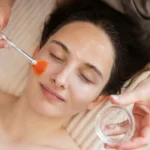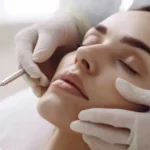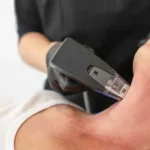The Best Chemical Peel for You, According To Your Skin Type
A chemical peel is a skin treatment used to enhance the appearance or feel of the skin. There are many different types and strengths of chemical peels. However, it is important to consult an experienced aesthetician or dermatologist to determine which is best for specific skin concerns.
What Are The Types Of Chemical Peels?
Different degrees of chemical peels can give the treatment needed to ensure the skin gets the loving it needs. The help of skin experts is best to identify the level of a chemical a patient must need to undergo, which includes:
Light Chemical Peels
Also called the superficial chemical peel is the most delicate choice since it only targets the skin’s external layer. However, light chemical peels can help decrease wrinkles and pores, correct jagged skin tones, and eliminate dark specks.
Typically, this peel applies alpha-hydroxy acids like lactic, salicylic, malic, kojic, glycolic, or a mixture. Regardless, skin experts can also use enzymes to enter the skin’s outer layer.
Moreover, superficial peels are commonly soft on the skin, but redness can be seen quickly after and possibly minimal flaking. Usually, a medical-grade light peel will recover for about one to seven days, but cosmetics can already be worn the next day.
Medical Chemical Peels
For a medium chemical peel, the skin specialist will utilize dressing, a unique sponge, or a cotton-tipped applicator along with the application of the chemical juice to the face, depending on the situation. Typically, this solution may carry trichloroacetic acid or glycolic acid. Blue pigment may be combined with trichloroacetic acid, generally recognized as the blue peel.
Moreover, the skin will start to brighten, and the specialist will use a cool compress. There may be a stinging or burning sensation for about 20 minutes.
In addition, no neutralizing enzyme is required, though they may give a hand-held fan to calm the skin. For those who undergo the blue peel, a blue coloring may appear on the skin that may persist for days after the peel.
Deep Chemical Peels
Known to be the most intense type of chemical peel, this enters the deeper strata of the skin. Skin specialists do deep chemical peeling to manage more severe skin problems, like acne or severe sun injury. The common acids applied in a deep chemical peel are trichloroacetic acid, glycolic acid, and phenol.
Since this is the most intense, sedation is a must. Next, the specialist will employ a cotton-tipped applicator to administer phenol to the skin. The first step will turn the skin white or gray. The treatment will be executed in 15-minute portions to limit the skin’s vulnerability to acid.
What Chemical Peel Should I Get?
The chemical peel to get depends entirely on the skin type. In fact, there are 9 Skin Types, and each has distinct needs and characteristics, which are:
Skin Type 1
The characteristics of Skin Type 1 include:
- Extremely oily skin.
- Large pores.
- Constant and severe breakouts.
- Stubborn post-breakout marks.
As such, a salicylic acid peel is recommended for this skin type. For this reason, salicylic acid is oil-soluble that can penetrate through oil and into the pore lining to help clear blockages and prevent breakouts.
Skin Type 2
Often, this skin type can experience blackheads, enlarged pores, occasional and mild breakouts, and tight and/or irritated skin. A peel that combines salicylic, lactic and glycolic acids are recommended for this skin type. With the help of lactic and glycolic acids, which are water-soluble, they will work hand in hand on the surface to dissolve and digest dead skin cells.
Skin Type 3
A salicylic acid peel is the best chemical peel for anyone with this skin type. This is because breakouts constitute a significant concern for Skin Type 3. In fact, the characteristics of Skin Type 3 include consistent breakouts, enlarged pores, tightness, irritation, and redness.
Skin Type 4
Considered a combination skin type, this type is characterized by enlarged pores, excessive oil production in the t-zone, easily red and flushed skin, and post-breakout marks that stay for weeks and months. A peel that combines salicylic, lactic, and glycolic acids is recommended for this skin type.
Skin Type 5
This skin type experiences a lot of redness and sensitivity, so it is best to avoid harsh chemical peels. Rather, go for a lactic acid peel since it is gentle on the skin and has no irritation potential compared to other acids.
Skin Type 6
This skin type is considered normal, but this skin type produces oil in the summer, mostly in the t-zone area. It can feel dry or tight in winter, and dullness and hyperpigmentation can be huge concerns. For this reason, they’re concerned about aging and loss of tone.
That said, the recommended chemical peel is a blend of the following acids: lactic, glycolic, malic, tartaric, and/or mandelic acids. Because Skin Type 6 isn’t necessarily sensitive, it can typically handle various acids in various percentages to reap all the benefits.
Skin Type 7
Often, this skin type focus on addressing signs of aging like dullness and hyperpigmentation. That said, it is best to have a combination peel recommended for Skin Type 6 and then apply a leave-on retinol product once the peel has been removed. Retinol helps accelerate the peeling process since it deeply penetrates and encourages more intensive resurfacing, often necessary for Skin Type 7.
Skin Type 8
Likewise, Skin Type 8’s main concerns are sun damage and hyperpigmentation. So, it is recommended to have a more intensive peel since it helps lift and remove discoloration. Moreover, applying a retinol product after the chemical peel can make a big difference.
Skin Type 9
This skin type may experience consistent dryness, redness, and rosacea. Since the skin tends to act sensitive, avoid strong peels containing a blend of acids. Rather, a gentle lactic acid peel is suggested.
Final Thoughts
Chemical peels can provide several benefits to improve the quality of the skin. Cultivated Beauty Aesthetic Boutique offers the latest Chemical Peels called RX T33 Biorevitalization, which is a skin-tightening peel without exfoliation. Furthermore, the PRX-T33 Peel combines trichloroacetic acid, hydrogen peroxide, and kojic acid that deeply penetrates and acts on the epidermal layer down to the basal layer, which helps stimulate the skin to regenerate and renew.Leave a reply









